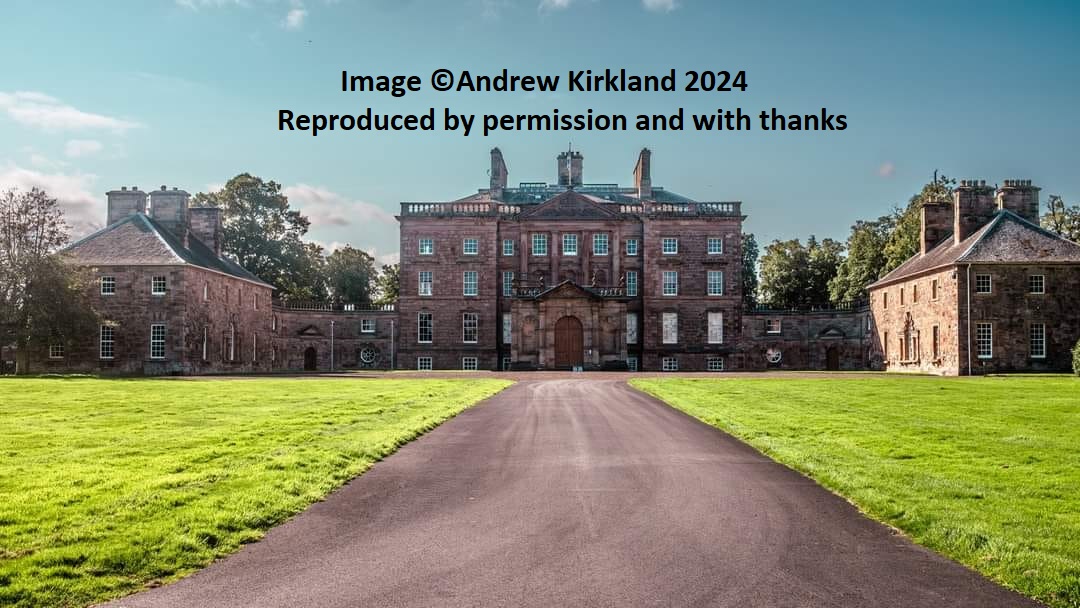Arniston House

Arniston House Details
Arniston House, occupied C18 Adam mansion containing fragments of C16 tower house, all of the Dundases
- Closest To: Gorebridge
- Access: Occasional Access
- Grid Reference: NT325594
Arniston House is an extensive country house dating largely to the 18th century, and consisting of a large central mansion with two wings connected to the main house by curved passages, creating a front courtyard area. It was designed by the famous Adam family of architects, and built in more than one phase, starting in 1726. The house was built over the top of an older house, which does not seem to have survived, and is sited within extensive grounds overlooking the River South Esk in Lothian.
The lands of Arniston were part of the extensive properties of the Knights Templar until the suppression of the Order in 1312, and lies close to the principal seat of the Order in Scotland, Balantrodoch. The surviving parts of some of this can be seen at Temple Church. After 1312 it is said that the Templar lands were granted to the Knights Hospitaller, which survived as an Order until 1563, when James Sandilands of Calder was the Preceptor, and was created Lord Torphichen as part of the Reformation. There is no evidence to support this link between the Orders, but it is interesting to note that the contract by which George Dundas of that Ilk acquired the lands of Arniston was with James, Lord Torphichen, so Arniston at least was held by Sandilands in 1571. The purchase by George Dundas was for his younger son James, who became the first Dundas laird of Arniston. It is believed that by 1620 James had erected a new house at Arniston, and at about this time his eldest son, another James was born. This younger James was a Covenanter, and became a prominent politician and judge, ennobled as Lord Arniston in 1662. His son was Robert, who spent time abroad and returned to Scotland with William of Orange. In 1725 drawings to build the new house had been commissioned, and the go ahead had been given for the building. Robert died in 1726 and never saw the house completed, instead it was his son, another Robert Dundas, who was forced to call a halt to the work in 1732 when the money ran out, although the house could be lived in. It was not until after Robert died in 1753 that work was to start again, and then it was not to the original design. Masonry from the old house survives in garden ornaments, and the 17th century Oak Room was rebuilt within it, but nothing of the building is really known. According to the Arniston House website, the hall of the house occupies the site of the courtyard of the old house.
Today the house remains occupied by the Dundas family, and offers guided tours at certain times of the year.
